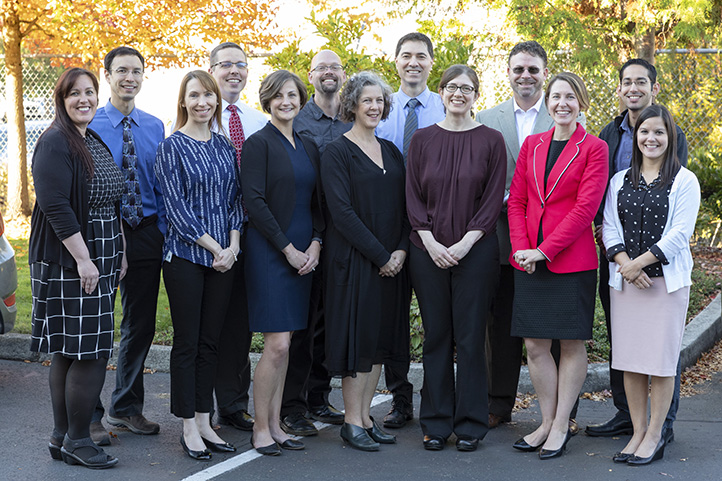Elizabeth Bentley, Pharm.D., M.S.J., Traci Hamer, Pharm.D., MAT, Katherine Reese, Pharm.D., Andrew Vidaurreta, B.S., Taben Main, Pharm.D., M.S., Steven Piscoran, B.S., Bryan Ing, Pharm.D., Darlene Marsh, Pharm.D., Jeannette Zimmer, Pharm.D., JJ Johnson, Pharm.D., Mindee Dewitt, Pharm.D., Sara Westby, Pharm.D., Johanna Heymann, LCSW, Christopher Matthews, D.O.
The risks of opioid use, especially when taken at high daily doses, for the management of chronic nonmalignant pain have been highlighted in medical and non-medical literature since the year 2000. In 2016, more than 42,000 people in the United States died of a drug overdose involving an opioid, whether prescription or illicit.1 An opioid use improvement initiative was established at Kaiser Permanente Northwest in March 2009 to promote quality, safety, and affordability related to prescribing opioids for chronic nonmalignant pain.
Pharmacy and physician leads created a multidisciplinary management team focused on opioid tapering (Support Team Onsite Resource for Management of Pain, or STORM) that began working with patients in February 2010. Program leads agreed that patient support and pain management education would be keys to success. STORM works in tandem with primary care clinicians to address the risks and costs of opioids and develops patient-specific treatment plans. This team, comprised of a clinician, pharmacists, and a social worker, provides patient education for those taking high-dose opioid therapies. They work with patients to develop new pain management and coping strategies while tapering opioid doses to safer levels through telephonic outreach. Patients benefit greatly from the enhanced level of service and support provided by pain management pharmacists whose training includes motivational interviewing and patient-engagement skills.
Program results show overall reductions in both high-dose opioid prescribing and average daily morphine milligram equivalents (MME). Data specific to patients enrolled in the tapering program show consistent MME reductions exceeding 50% from baseline that are sustained three to six months post discharge. Cost savings due to opioid use reduction since 2010 total $18.7 million. Pharmacists on the tapering team offer compassionate support to patients through their most difficult times during the taper. Once the taper is complete, patients’ pain level is usually unchanged or better.
Primary care clinicians have a broad knowledge base and refer patients to specialty care for a variety of health conditions. Utilizing pharmacists in the challenging area of pain management allows primary care clinicians to leverage the pharmacist as a specialist. These pharmacists not only actively taper opioids, but also increase patient engagement, recommend non-opioid medication options, and build up patients’ active coping strategies. With this approach, pain management pharmacists become an integral part of the healthcare team, working to improve patient outcomes and increase quality of care.
- Centers for Disease Control and Prevention. Drug overdose death data. https://www.cdc.gov/drugoverdose/data/statedeaths.html (accessed 2018 July 27).

